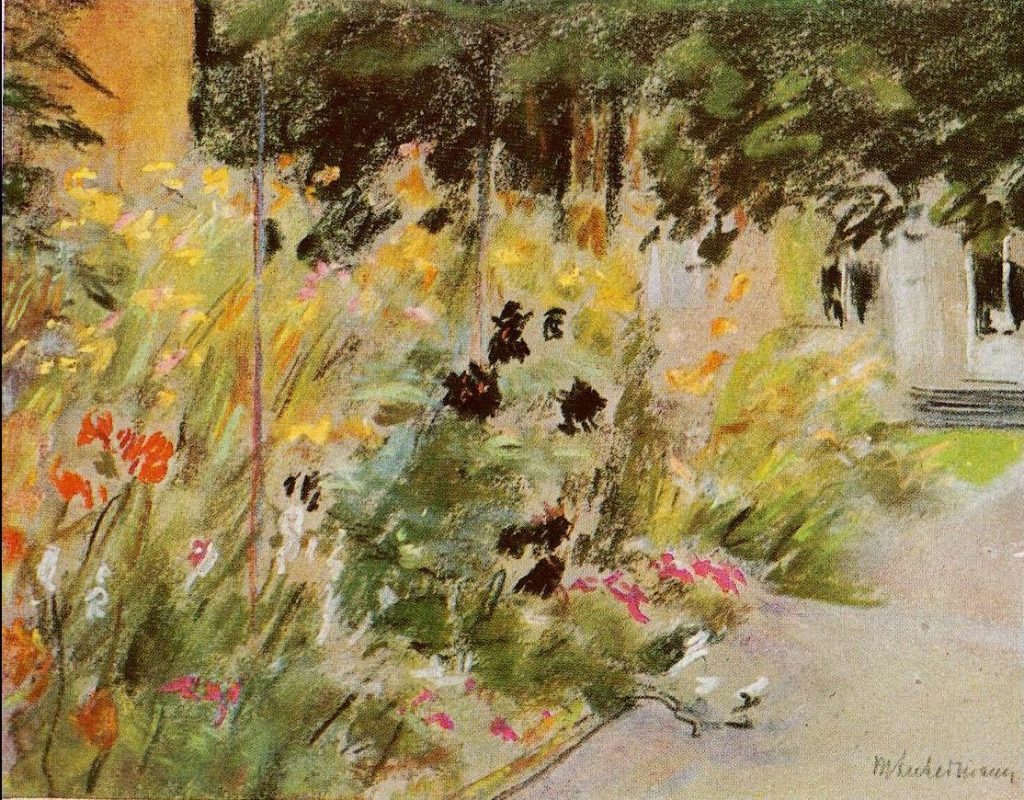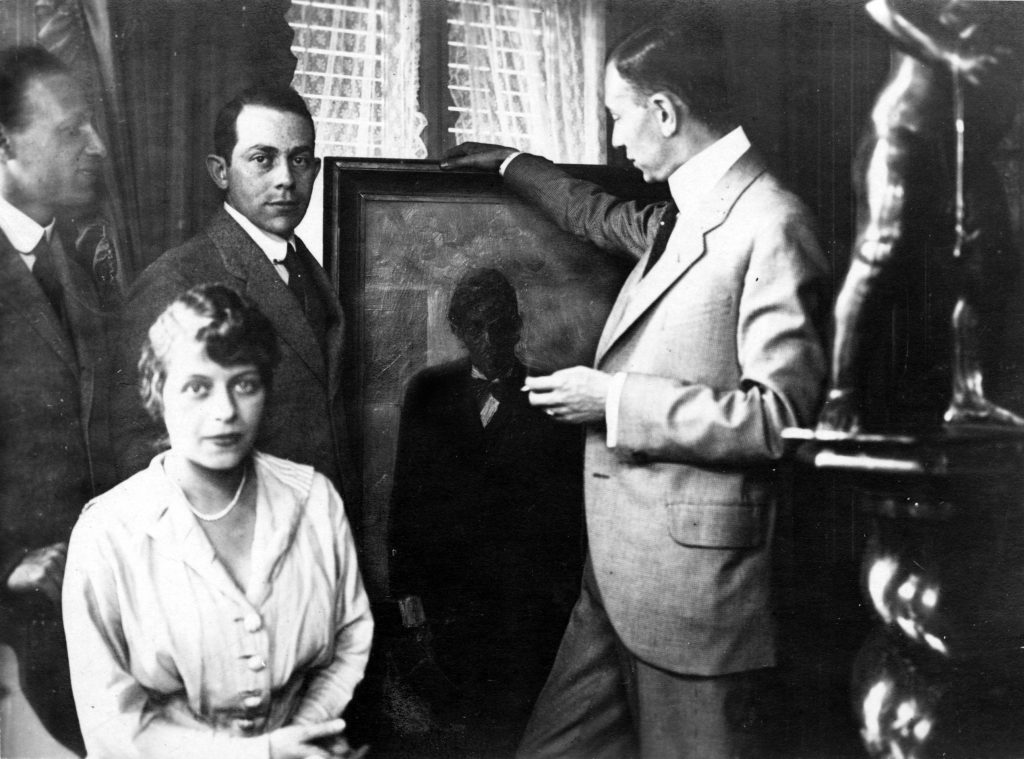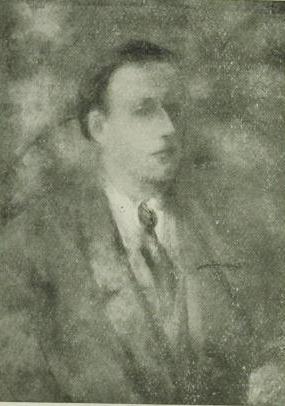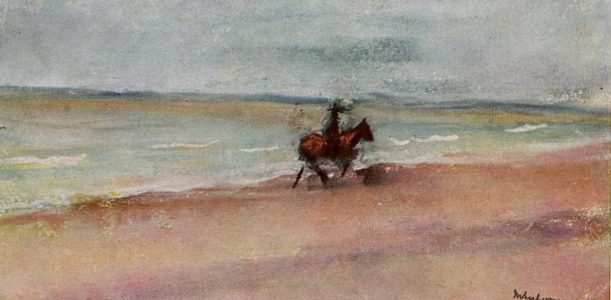


Drawings Gurlitt Estate
Published Information on four drawings by Max Liebermann, belonging to the Leder Collection until 1925, later in the collection of Hildebrandt Gurlitt:
“Holländische Dorfstraße”, um 1884, Bleistift
“Alter Herr; Alter Herr zur “Gedächtnisfeier in Kösen”, 1888, Kreide
“Häuser am Wald; Zwei Bauernhäuser am Fuße eines Waldabhanges”, um 1902, Kreide
“Ein Junge zu Pferd am Strande, nach links”, um 1903, Kreide
Purchasers of the Moving Goods (Lifts) 1944/1945
Art Collection David Leder, Chemnitz/Berlin
Provenance Research Project in Collaboration with Mrs. Dr. Bettina Leder, funded by the German Lost Art Foundation
The project was started on June 1, 2021 and ended on August 30, 2022. The research project aimed to reconstruct the art collection of David and Lola Leder. David Leder (1888-1947) worked as a merchant in the textile industry first in Chemnitz, later in Berlin. He married Lea Laura, called Lola, nee Bernstein (1892-1977) in 1914.
David and Lola Leder were friends with Emil Orlik, Otto Th. W. Stein, Max Liebermann, and Lovis Corinth; Liebermann and Corinth portrayed him and his wife Lola several times, and their works were numerous in Leder’s collection.
David Leder had acquired the entire graphic oeuvre of Lovis Corinth and acted as a patron for the Chemnitz Municipal Collections and Kunsthütte respectively. He also offered drawings as donations to the Berlin National Gallery.
An inventory of the collection has not been preserved, but there is a list from 1923 for the hand drawings of Max Liebermann.
David Leder supported contemporary artists such as Jakob Steinhardt, Otto Th. W. Stein and, according to his friend Erich Goeritz, was particularly interested in books, which he collected in first editions and offprints.
In 1925 David Leder sold part of his collection of hand drawings at two auctions in Berlin. On March 3 and 4, 1925, 316 hand drawings by Max Liebermann from the collection were offered by Paul Cassirer and Hugo Helbing in Berlin. The Berlin National Gallery acquired 20 or 25 drawings there. Four drawings entered the collection of Hildebrandt Gurlitt at an unknown date.
The second auction included a total of 309 drawings and took place on October 29, 1925 at Amsler & Ruthardt in Berlin. It is not possible to verify whether all lots offered were from the collection of David Leder.
Of the drawings offered at both auctions, 96 remained unsold.
Part of the Leder collection was stored – both before and after the auctions – in the Chemnitz Municipal Museum or in the Chemnitz Kunsthütte. Some objects were offered for sale by the Chemnitz art dealer Gerstenberger from 1926 onwards. Which of them were sold could not be verified exactly. In 1932, the art dealer sent some of the works back to David Leder in Berlin.
On November 22, 1927, 71 works were offered at an auction by F.A.C. Prestel from the “estate of a well-known Frankfurt art lover”, which had probably previously been in David Leder’s collection and had been for sale at the Amsler & Ruthardt auction in 1925.
The Leder family was persecuted as Jews from 1933 on. In 1935, David Leder and his wife Lola sent artworks and books on loan to the Tel Aviv Museum.
In July 1939, he and his wife managed to emigrate to London. The removal goods were packed into two lifts, but were not transported further due to the beginning of the war in 1939. Two paintings had already been lent by the Leders to the Jewish Museum Berlin in 1933 and were later confiscated. The Berlin Gestapo confiscated the removal goods in January 1942. The Chief Finance President of Berlin-Brandenburg auctioned or sold parts of it in the spring/summer of 1944. The purchasers were researched, but could not be identified. In 1947, Lola Leder tried in vain to recover the removal goods. She received back some of the items on loan that had been sent to Tel Aviv. The loans to the Jewish Museum were found and restituted in Berlin in 1948.
A portrait of David Leder by Gustav Schaffer is now in the Kunstsammlungen Chemnitz.
On the Leder Family
About the Leder Family
David Leder came to Chemnitz from Jassy in Romania in 1889 as a one-year-old child with his parents and siblings. After attending high school, David Leder learned the trade of a merchant in his father Leon Leder’s company, which dealt in stockings and gloves. In 1910 he was given power of attorney in his brother-in-law’s company. In 1914 David Leder founded a wholesale company in Chemnitz and married Lea Laura, called Lola, Bernstein.
When Romania entered the war in August 1916, David Leder was interned with his brothers and father in Holzminden in the Duchy of Brunswick.
In 1920 David Leder went to Berlin with his wife and their three children, Rudolf, Alfred and Ruth, who had been born in the meantime. His close friend Erich Goeritz had also moved there with his family. Erich Goeritz’s father had founded the textile company Sigmund Goeritz AG in Chemnitz, which had risen to become the market leader in underwear.
In 1921, David Leder founded a company in Berlin for the wholesale and retail of wool and cotton. In 1925 he returned to Chemnitz with his family.
From 1928, David Leder worked in Berlin for the Chemnitz and Berlin textile companies Sigmund Goeritz AG, among others, and as sole agent for numerous companies for all branches of the Woolworth company. Around 1930, the family moved back to Berlin.
From 1933 on, the Leder family was persecuted as Jews by the National Socialists. The children of David and Lola Leder went into emigration. David Leder was deported to the Sachsenhausen concentration camp in November 1938 and remained imprisoned. His company was deleted from the Berlin Commercial Register in February 1939. In the summer of 1939, he and his wife Lola managed to leave Germany and emigrate to London via Basel and Paris.
David Leder was unable to continue his earlier activities in London. At first he was not granted a work permit and in 1940 he began an apprenticeship as a lathe operator, which he discontinued due to an accident at work that resulted in the loss of a finger. After that he was employed at the fire station in the air-raid shelter. He died in a London hospital on March 1, 1947, at the age of 58.
Publication
Blog präsentiert von Hypotheses – Zum OpenEdition-Katalogeintrag – ISSN 2702-7384
“Die Kunstsammlung von David und Lola Leder” von Beate Schreiber unter Mitarbeit von Dr. Bettina Leder


